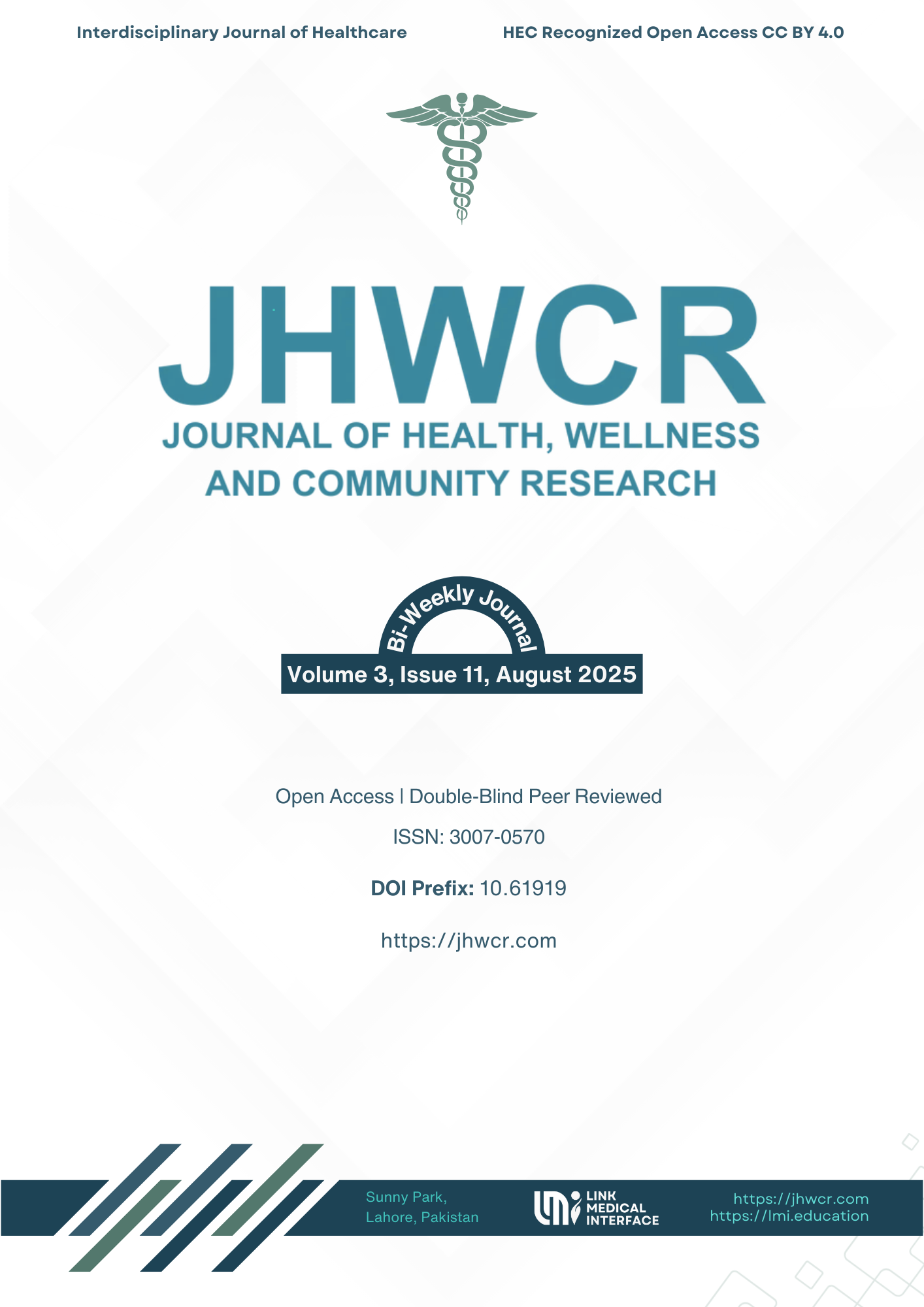Prevalence and Determinants of Exercise-Associated Musculoskeletal Disorders in the Fitness Center Population: A Cross-Sectional Study from Karachi
DOI:
https://doi.org/10.61919/kkztfv79Keywords:
Musculoskeletal disorders; Sports injuries; Weightlifting; Gym safety; Prevalence; Risk factorsAbstract
Background: Exercise offers substantial physical and psychological health benefits, yet participation in gym-based activities carries risks of musculoskeletal injury when performed without supervision or preventive practices. The global rise in fitness center participation has been paralleled by increasing injury incidence, but local data from Pakistan remain limited. Objective: To determine the prevalence and determinants of exercise-associated musculoskeletal disorders among gym members in Karachi, with emphasis on training practices and demographic risk factors. Methods: A descriptive cross-sectional study was conducted between January and May 2023 in multiple Karachi fitness centers. A total of 150 adults aged 18–45 years were recruited using convenience sampling. Data were collected through a structured questionnaire capturing demographics, training patterns, and injury history. Statistical analyses included chi-square tests, odds ratios with 95% confidence intervals, and multivariable logistic regression to identify independent predictors. Results: Injury prevalence was 25.3% (n = 38), with the lower limbs most frequently affected (7.3%). Weightlifting was the leading cause (12.7%) and remained a significant independent predictor (adjusted OR = 2.23, 95% CI: 1.25–3.97). Lack of supervision (OR = 1.94, p = 0.017), absence of warm-up (OR = 1.72, p = 0.039), gym experience ≥1 year (OR = 2.01, p = 0.028), and session duration >1 hour (OR = 1.76, p = 0.044) were also significant determinants. Conclusion: Exercise-associated musculoskeletal injuries are common among Karachi gym members but largely preventable. Structured warm-up routines, professional supervision, and safe progression in strength training are essential to reduce risk.
Downloads
Published
Issue
Section
License
Copyright (c) 2025 Aimen Rafiq, Poonam Mahraj, Muhammad Umair Shaikh, Muhammad Ayaz, Isra Zahid, Muhammad Jawwad Baig Chughtai, Kamlesh Kumar (Author)

This work is licensed under a Creative Commons Attribution 4.0 International License.


